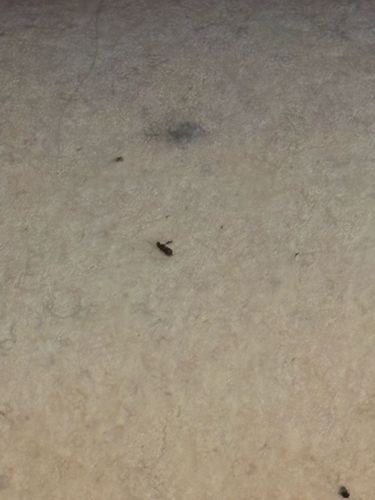Springtail
Scientific Name: Too small to identify an exact species; Collembola is the taxonomic group.
Order & Family: Order Collembola (currently considered a class or sub-class, but historically an order). No specific family can be identified from the image.
Size: Typically 0.2 mm to 10 mm, most commonly around 1-3 mm.

Natural Habitat
Damp environments, including soil, leaf litter, decaying wood, under rocks, in basements, bathrooms, kitchens, and other moist areas within homes.
Diet & Feeding
Springtails primarily feed on decaying organic matter, fungi, algae, bacteria, and sometimes plant detritus. They play an important role as decomposers in many ecosystems.
Behavior Patterns
Springtails often jump when disturbed using a furcula, a spring-like appendage tucked under their abdomen. They are typically found in moist environments, especially in soil, leaf litter, and decaying wood. Some species can be found in homes, particularly in damp areas like basements, bathrooms, or kitchens, often congregating around sinks, drains, or moist houseplants. They are generally harmless and do not bite or transmit diseases. Their presence indoors is usually an indication of high humidity or moisture problems.
Risks & Benefits
Generally considered beneficial as decomposers in ecosystems, aiding in nutrient cycling. They pose virtually no risk to humans, structures, or pets. Infestations indoors usually indicate moisture problems that should be addressed.
Identified on: 9/4/2025